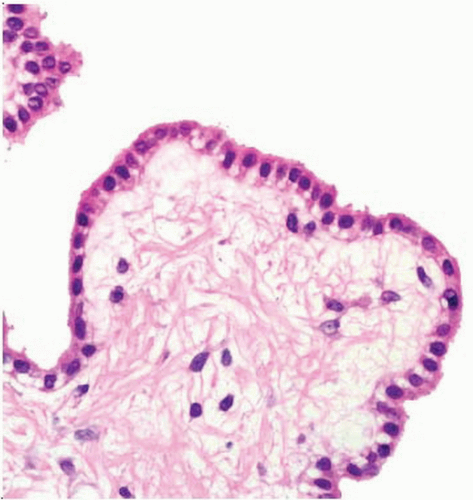Well-Differentiated Papillary Mesothelioma
Cyril Fisher, MD, DSc, FRCPath
Key Facts
Clinical Issues
Rare
Peritoneal lesions mostly in females
Occasionally paratesticular in males
Solitary or multiple
Rarely recur after long period as malignant mesothelioma with atypia and invasion
Microscopic Pathology
Well-formed papillary structures
Uniform cuboidal or epithelioid cells with central rounded nuclei
Multinucleated cells in stroma
Top Differential Diagnoses
Malignant mesothelioma
Nuclear atypia, nucleoli, mitoses, necrosis
Metastatic ovarian serous carcinoma
Cytological atypia
ER, BER-EP4, MOC-31 positive
 Hematoxylin & eosin shows well-formed branching papillary structures or blunt processes arising from the peritoneal surface. |
TERMINOLOGY
Synonyms
Benign mesothelioma
Mesothelioma of low malignant potential
ETIOLOGY/PATHOGENESIS
Environmental Exposure
Some patients have history of asbestos exposure
CLINICAL ISSUES
Epidemiology
Incidence
Rare
Peritoneum, omentum, pleura, pericardium
Paratesticular (tunica vaginalis)
Age
Predominantly 30-50 years
Gender
Peritoneal lesions mostly in females
Pleural lesions M = F
Presentation
Incidental finding
Treatment
Surgical approaches
Excision of localized lesion
Adjuvant therapy
Chemotherapy for multiple or widespread lesions




